The Article
All Gates Open: The Story of Can
25th March 2018
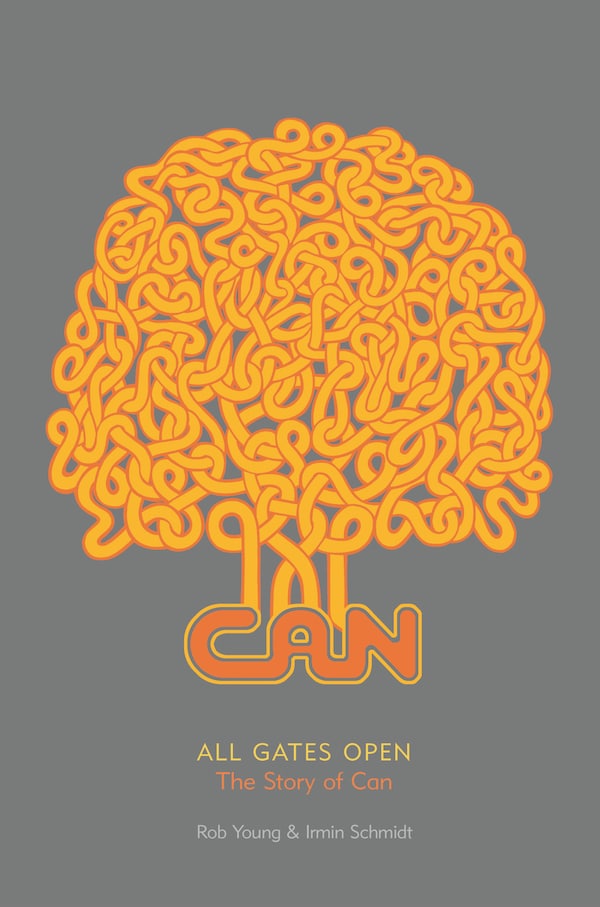
Title: All Gates Open: The Story of Can
Authors: Rob Young & Irmin Schmidt
In a musical world where soul-lite owes as much to R&B as car-tracked, oil-stained, soot-flecked slush owes to freshly fallen snow, where struggling city and regional theatres are hostages to Abba and Queen tribute bands (all of them, a paean to dentistry) and where the absence of Mark E. Smith, punk’s own MacArthur who faded away in a bloated delirium, has removed all the fun out of urban decay…we need the music of Can more than ever.
Krautrock (a name I would only ever use behind the backs of the sainted kosmiche through a mixture of reverence and cowardice) might be German per se but it remains ‘our’ music. The Americans have New Orleans, we have Berlin, they have Memphis we have Dusseldorf and so on. The majority of Westerners live in cities with a uniquely European flavour. Who better to tell their stories than people who were brought up in a place ladled with devastation by location, blame by association and guilt by generational blood? Krautock bands knew. They were linked and simultaneously detached enough to comment. World War 2 was – and still is – our collective glue. Our shared experiences. Our history. Our pain and our hurt. We live with the aftermath still.
In the second part of All Gates Open. a 572-page book, published by Faber & Faber, co-written by Rob Young (editor of the Wire magazine) and Can keyboard player Irmin Schmidt, Schmidt recalls a childhood experience in 1945, “The Americans were in our village, occupying the large guesthouse and operating an army field kitchen in the courtyard. The cook was an enormous Russian who always had a deadly serious look on his face. Not even the hint of a smile. But us kids sometimes received pancakes from him. One day he wanted to give me a piece of chocolate, when he suddenly froze, stood completely still and looked at me, squinting strangely, before pulling me with both arms to his chest and bursting into tears, really heaving with sobs. A couple of soldiers ran over but I had wrapped my hands around his head and held him tenderly in total silence. I had no fear.”
You see, it’s not the banks of the Mississippi that Europeans should be looking towards for spiritual solace, it’s the Rhine. More specifically, it’s Hitler’s bunker. For that was the spot where a world ended – Adolf’s world, complete with 3D models of his New Dream, the only buildings in Berlin left standing intact, an architectural state and a testament to his fractured rantings – and a new world began, complete with fractured promises that seemed real and achievable for all of 10 minutes.
Paris might be the centre of culture and even of love but it’s Germany’s almost primitive physicality that is so arresting to the eye and it’s Krautrock’s physicality that is so arresting to the ear. Whether that be the Motorik (a word meaning ‘motor skill’) beat of Neu! or the synthesised tales of the autobahn from Kraftwerk.
Can were one of the early Krautrock bands to point a finger at the ‘kitsch krooners’, the schlager scene that was so safe and so middle of the road that The Carpenters stood as Metallica in comparison. When schalger was the German people’s cultural Prozac, to help them forget. The din helped them stop asking questions of themselves and of others.
You would think that All Gates Open would follow a single narrative, Schmidt acting as a supplicant, a silent yet expert witness to the tales told. Not so, both men retain a singular and active freedom. Young offers a biography of the band and asserts that his statements will not reach beyond that…even though, two and half pages later, he is talking about a 19 year old Schmidt trying to read among the “babble” of his fellow Conservatory students and then two pages after that he wallows in Schmidt’s childhood. So is Young an unreliable guide? I wouldn’t go that far. A man of unbridled musical passions and musical enthusiasms, you might say, and you can’t damn him for that.
Hence, as ever with biographies the usual template is triggered. All Gates Open presents the band’s early days, their musical and artistic education – whether than be in the company of Stockhausen or Andy Warhol – but you will also experience the early context, whether that be student riots, the ‘reason’ behind the Baader-Meinhof gang (and how Can guitarist Michael Karoli and his girlfriend of the time, Eveline Grunwald were often stopped by the police because they drove a similar car and looked like Andreas Baader and Ulrike Meinhof) and or the politically centred writings of playwright Peter Weiss. As expected, this context gradually filters down to band matters, especially as the individuals coalesce. We learn of the importance of the band’s first lead singer, Malcolm Mooney, “Can wasn’t sure which way to go until Malcolm jumped one day to the microphone and pushed us into A RHYTHM.” said the band’s late bassist, Holgar Czukay (his emphasis, incidentally).
You also hear how the original Inner Space Productions was changed to Can at the instigation of both Mooney and drummer Jaki Liebezeit. Firstly, Andy Warhol had made the can concept fashionable with his Campbell-based art, it was a short name – attractive in itself to the group – while Mooney mentioned that it also meant “ass” in New York slang. That clinched it. Actually, the band began as ‘The Can’ but that was “…one word too much!” So Can it was then.
And off we go on a fact-filled testament detailing a host of events such as the leaving of Mooney and the joining of Kenji “Damo” Suzuki (and the band’s later fight with their very own Yoko Ono or, in this case, a female Jehovah’s Witness missionary which lead to Suzuki’s eventual departure) and the band’s work for film and TV.
There’s also time in All Gates Open to examine the band’s internal sound and what made Can…Can. For example, over on pages 210-211, we have a style profile on drummer, Liebezeit, and the inherent dangers in maintaining his beat and rhythm. It sounded like a stressful experience, “The whole thing is to avoid mistakes,” said Liebezeit. “I know what I should not do. So I don’t do it, otherwise I’ll fall down…The movement has to be absolutely harmonic…The brain should not interfere too much…it controls me not to make mistakes…” and so on.
The second part of this book features random thoughts, jottings and conversations via Irmin Schmidt. Spanning around 200 pages or so. As the publisher states, this section features, “…an oral history of the band, collated by former Electronic Beats and Spex editor Max Dax and Robert Defcon, drawing on interviews Irmin conducted with musicians who see Can as an influence, like Bobby Gillespie, Geoff Barrow, Mark E. Smith, Daniel Miller and many others, but also with artists and film-makers like Wim Wenders and John Malkovich, where he reflects on more personal matters and his work with film. Extracts from Irmin’s notebooks and diaries from 2013–14 are also reproduced as a reflection on the creative process and the memories, dreams and epiphanies it entails.”
In All Gates Open, Mark E. Smith talks about buying Tago Mago when he was 15, “I went to grammar school at that time and everybody was listening to Pink Floyd and the Beatles. They were shit. But Can were great. As was Gary Glitter (you feel that only Mark E. Smith could conflagrate the two). And the Velvet Underground.” He continued, “Can saved my life. Irmin, you fucking saved my life! And because you saved my life I even bought Soon Over Babaluma.”
And from the notebook, “27.3: We spent the night because we have a meeting today at 12p.m. with Julian Cope. We’re just on our way when his daughter calls us to cancel the appointment. No explanations given. (Well, never trust a hippy).”
At the end of the first part of All Gates Open, the band biography, Young lists Can’s contemporaries: Kraftwerk, Amon Duul, Neu!. Guru Guru, Ash Ra Tempel, Faust and more and positions Can thus, they were, “…both part of it and apart from it.”
If All Gates Open has one issue, it’s root is in that statement. It’s reflected in Young’s own media training, cultural bias and his record collector fan insistence of grading. He ends the book as if he were arguing the toss with another fan down the pub. Can was, “…apart from all of its contemporaries.” As if the other bands were lumped into one gelatine mass. Young believes that Can, “…did not so much lead the pack as keep its distance from the rest.” Again with the collectivisation of a diverse collection of artists investing their art into a wide array of musical genres such as psychedelic-type rock, electronic experimentation, fusion, esoterica, folk…and other non pack-type pursuits.
As a Can biographer and obvious fan, this is an understandable if regrettable stance but as a wider observer of culture and the music within, it is a grievous disappointment and I expected more than a pat rock critic conclusion. I wanted the conclusion to include a pinch of social history. Young drags a ball and chain of media-inflected brand-ism throughout the book to, presumably, satisfy the base rock fan and possible Can customer of future Mute-produced product.
‘Krautrock’ is fine for HMV, social media conversations and journalistic short-hand but as the board to attach a biographical conclusion to a major book that is around three foot thick?
Young tries to state his independence while pretending to peer at the media from afar, (“‘Krautrock’ has become press-release shorthand for any kind of vague mechanical beat coupled with unusual sounds”). He then becomes the victim of his own media training and influences. Young sees the music as a reductive genre, a recognisable entity, a thing, something to hold, reinforced by his notion of “a circle of ‘core’ groups” and the falling quality of other, lesser known artists that “rapidly went downhill”. I’m only surprised that Young didn’t award each group a mark out of 10. Why break the habit of a career?
As you can see, I rail against. Let’s remind ourselves. Krautrock is not a Germanic theme in itself. That is, within the German artists involved, there was no such thing as Krautrock, there was no scene. And with no scene, there can be no “core” and “downhill” is just a fan construct. A personal fictional preference inserted into a work of non-fiction.
Most musical styles emerge and do so over time and after slowly increasing pressures. They might appear to break suddenly in the public’s awareness but often for reasons resulting from slow fermentation. It is rare for any force of music to emerge and be contained within a single country and to do so largely because of a single, defining event. In this case it was WW2. A war that started and, in Europe, ended at the doorsteps of Can, Kraftwerk, Neu! et al. As soon as they were old enough to react (either consciously or, often, unconsciously), an entire generation rose up as one and put a voice to their emotions. Each was as valid and as important as the next. When you react to something like that, there really is no good or bad. Just varying shades of the same outpourings.
So, am I damning All Gates Open? Not at all. Young’s workmanlike and efficiently professional account offers no real insight or original thought, although it is factually valuable. The reason for buying the book belongs to the second instalment and the input of Irmin Schmidt. He fills gaps, gives the story life but is never hijacked by it and provides continual context. His conversational, sometimes rambling but always interesting, interviews, jottings from his notebook and other scribblings tell you more about the notion of ‘Krautrock’ than Young ever will.
[Don’t forget to check out my new Facebook Group, The Audiophile Man: Hi-Fi & Music here: www.facebook.com/groups/theaudiophileman for exclusive postings, exclusive editorial and more!]


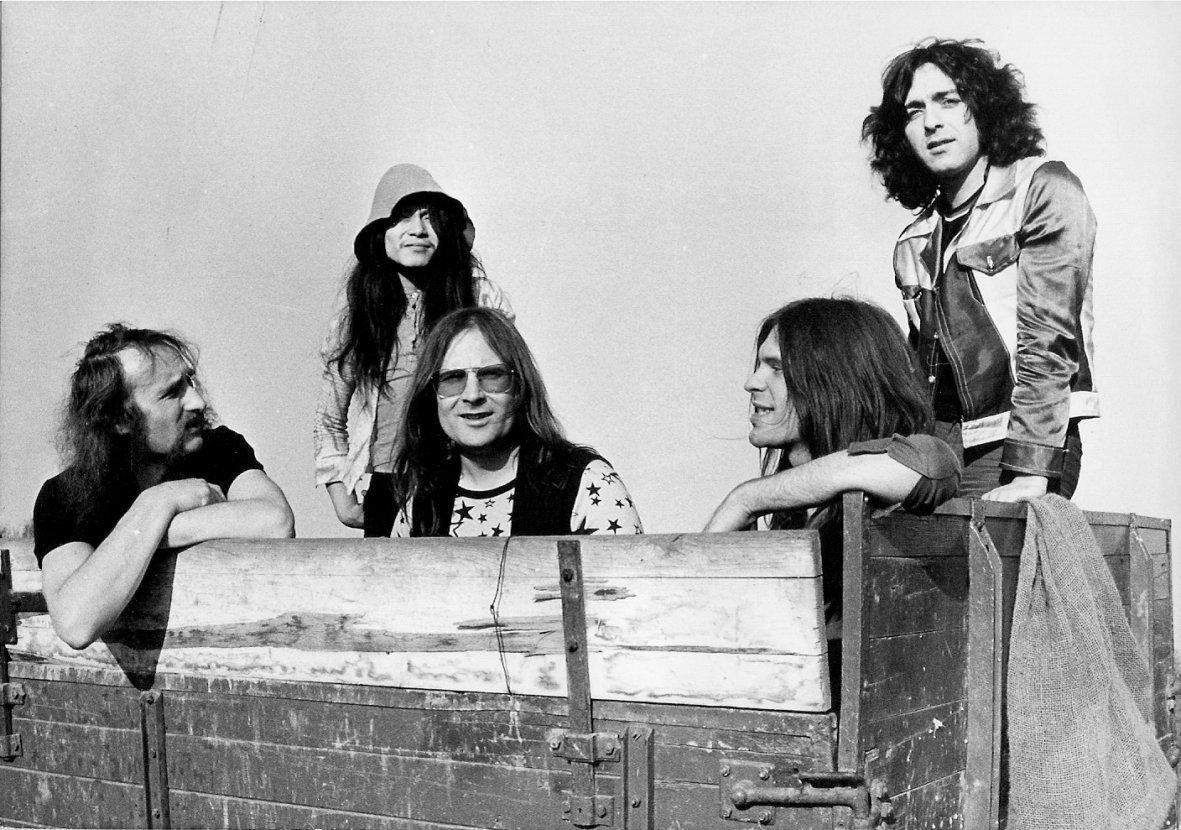
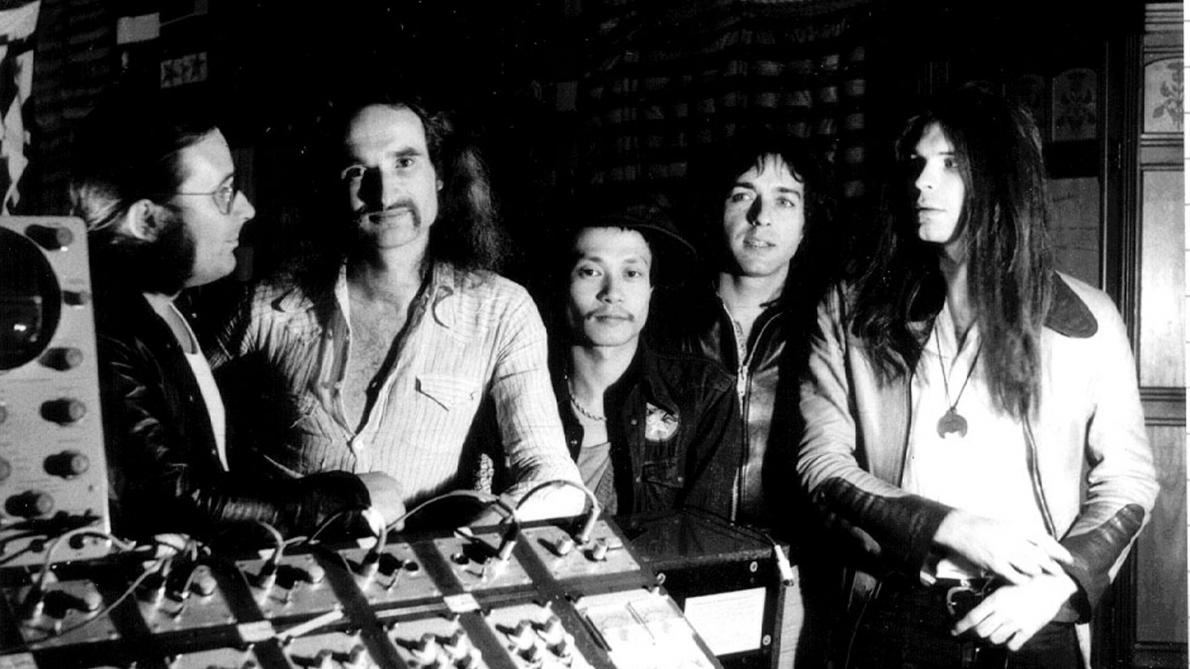
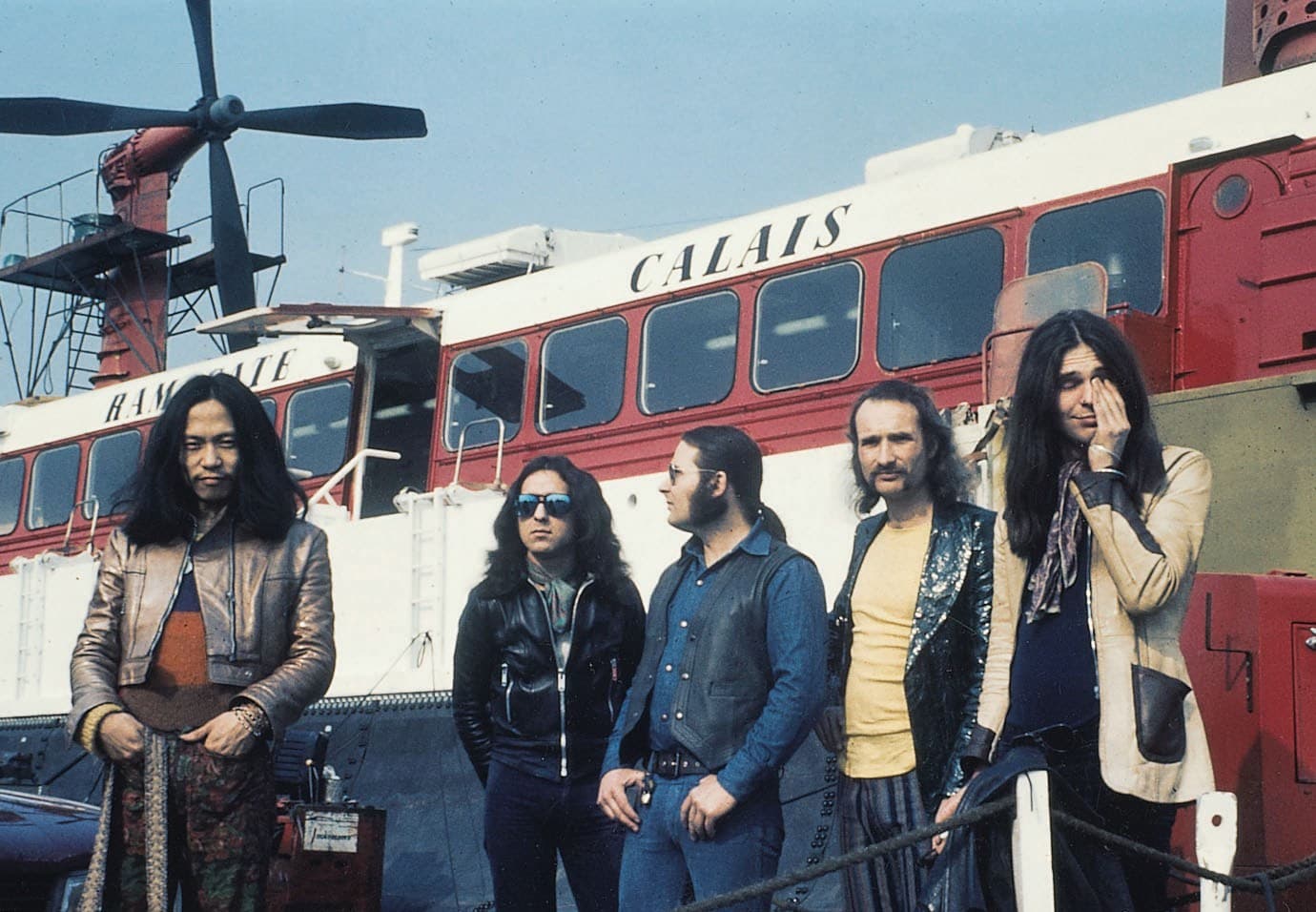
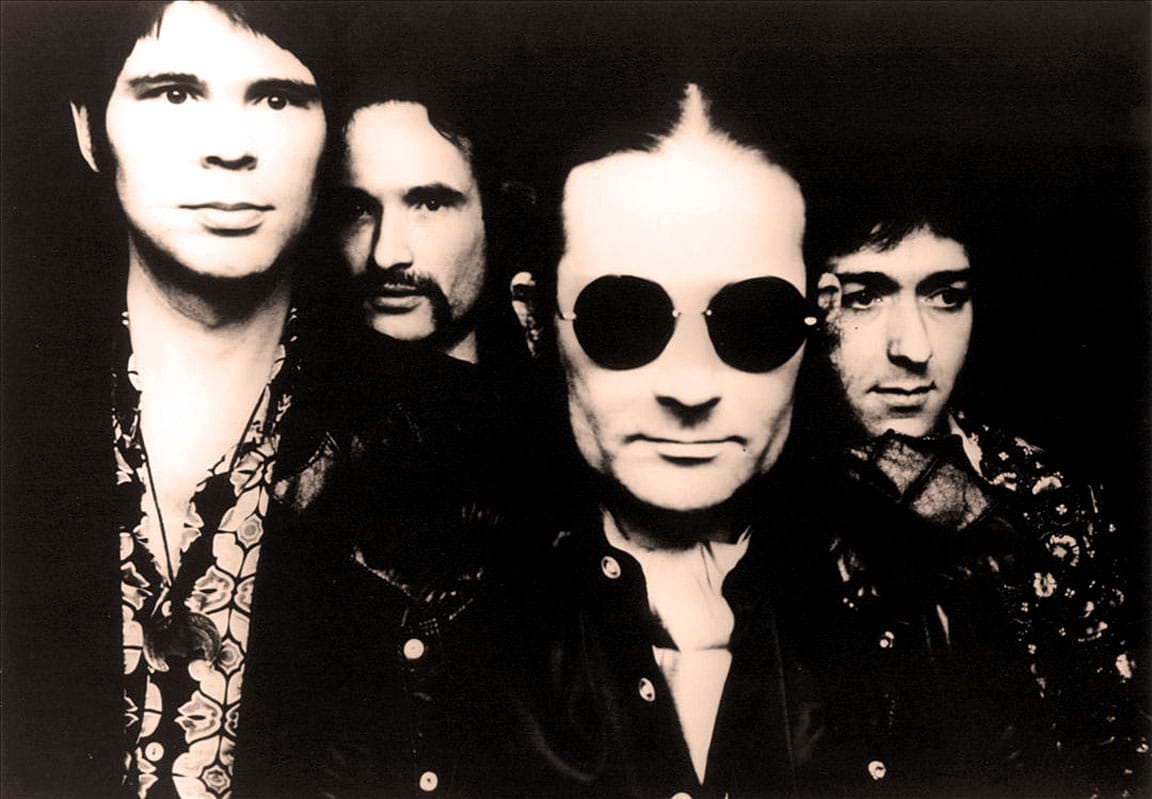

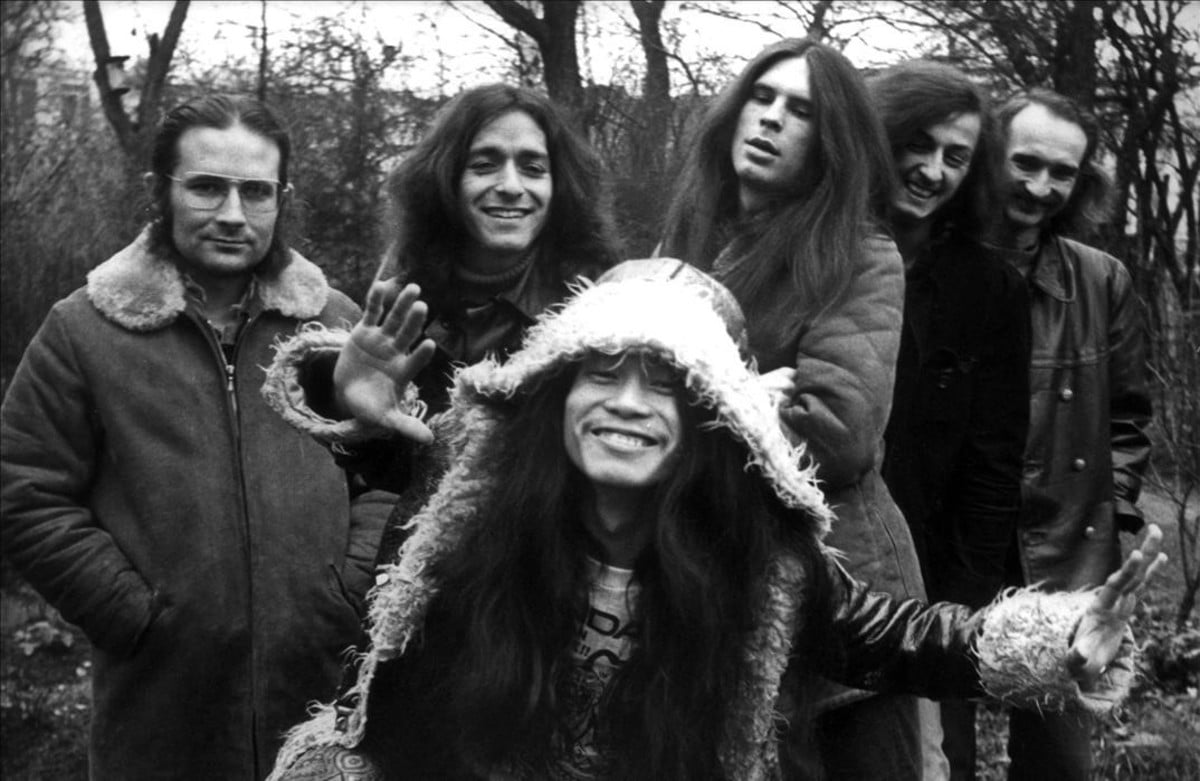
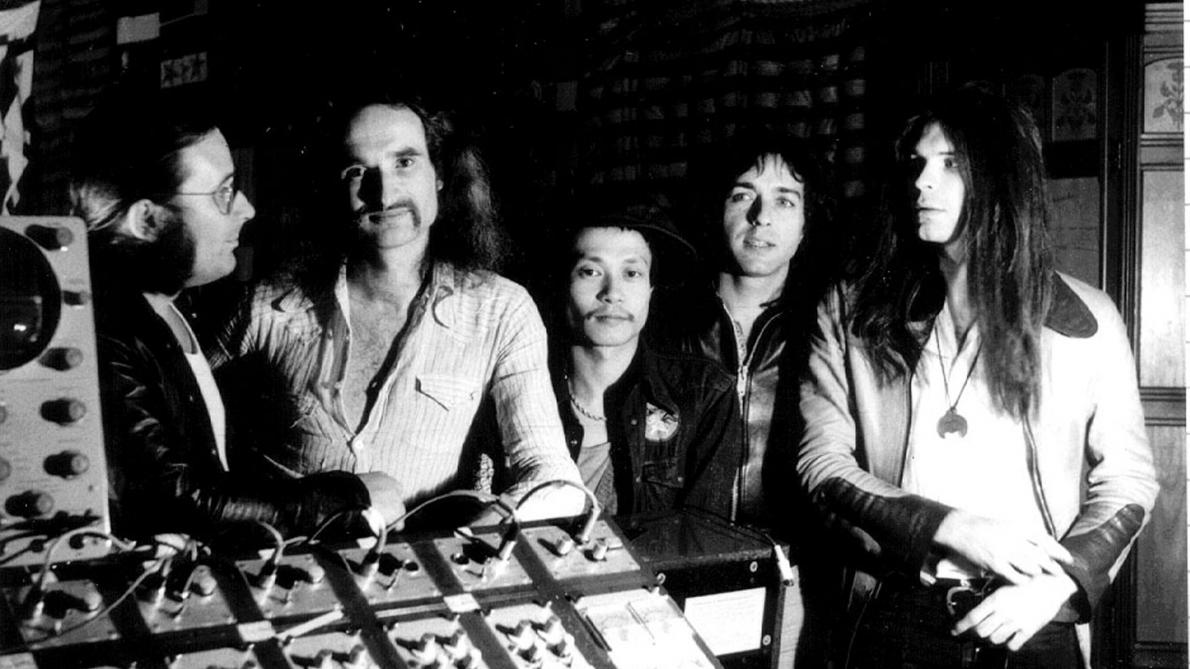
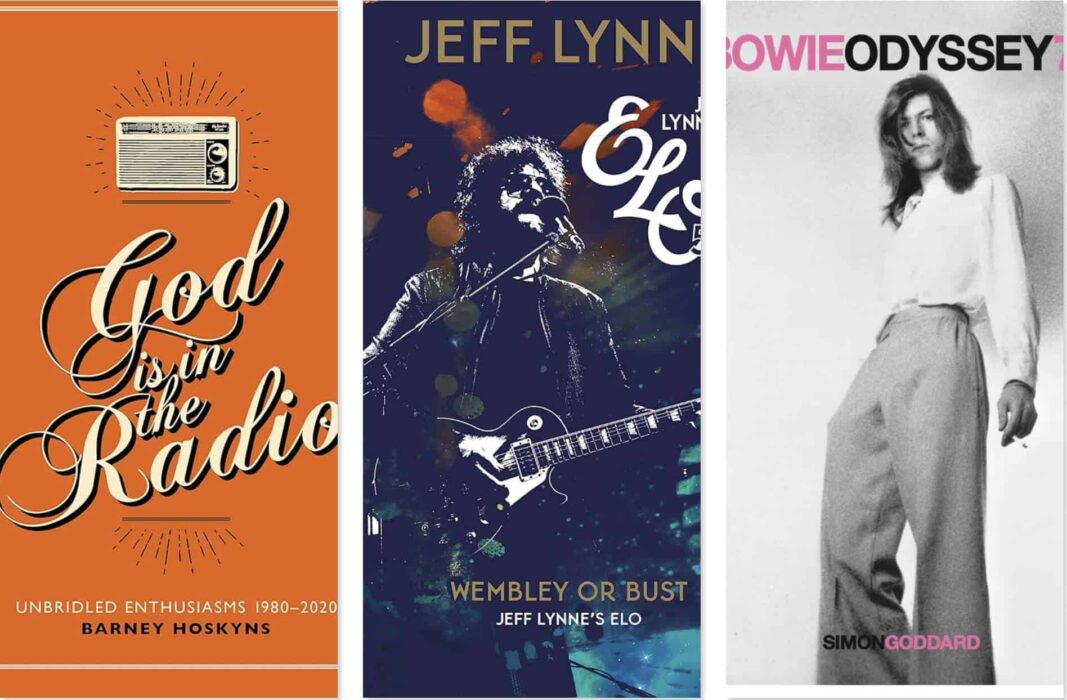
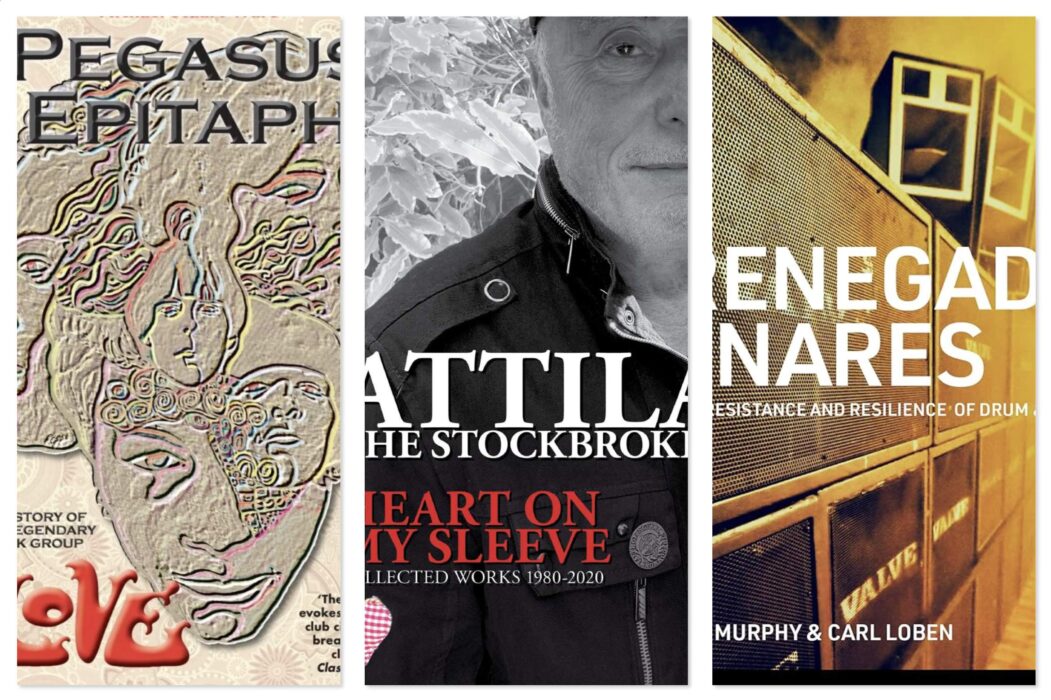
After reading your brilliant introduction only one thought came into my head : you should have written the book üìö
Dermot – that’s very kind of you to say. Thank you 🙂
My friend introduced me to Can in the early 70’s. Their music was defnitely individual, I always listened to their music in a different way, their musical expression was so Can….! ..and their song ‘Hunters & Collectors’ is awesome which literally pours the ambience of the particular seedy sex trade.
Thanks for your thoughts Romulus – nicely put. And I agree entirely 🙂
Somewhat problematic review. In fact there are numerous factual errors‚Ķ You say: ” within the German artists involved, there was no such thing as Krautrock.” I was in Munich Oct. 2, 1973 to see CAN (and Damo was not still there singer (one of the errors in the book). I found out about their concert when I saw a flyer in a record shop. As a fan of ‘Krautrock,’ I wondered where I could find albums by these bands in a shop where almost all the records were German. I found all of them in the DEUTCHROCK section. So people in Germany at the time seemed to be able to see a KRAUTROCK genre — even if they did give it a different name.
Hi Jay – many thanks for your note. There’s two points here.
1: I’m sure the guys were aware of the Krautrock genre (UK interviewers constantly brought up the label during interviews asking for German band’s views on the name) and I’m sure they exploited it for all it was worth – they were mostly poor musicians trying to make money, why look a gift house in the mouth? If you want to call it Jelly Tots Rock or Kevin Rock or whatever, then that’s fine too, as long as I make a living out of it. But the label was created outside of their sphere of influence and outside of their own creativity. This was a UK branding.
2: I don’t agree that Krautrock and Deutchrock are the same thing. ‘German Rock’, as it translates, means indigenous music as far as I understand.
Hi Paul. two points: 1. I totally agree that it was a totally UK branding and probably helped sell records… In my travels around Europe in ’73, I ran into many Germans. With one exception, none had ever heard of Krautrock or any of these bands. The one exception was Klaus from Dusseldorf who knew as much as I did about these bands and more. And one of the things he told me then was that FAUST were totally unknown in Germany — even unknown to German followers of Krautrock. And that FAUST were ONLY known in the UK. 2. To clarify my point: In the shop I visited, Krautrock and Deutchrock were definitely the same thing. (I don’t know if this was true in other German record shops though). All of the albums in the Deutchrock section were Krautrock bands. Other German rock bands were NOT in this section but generally dispersed throughout the shop. I was familiar with these bands from reading various European (i.e. UK) papers and magazines and having heard some of them (and not liking them) when I heard them in U.S. record shops (and I was lucky enough to live in an area where a number of shops had excellent import sections as early as 1969. So (at least in the one shop I visited in Munich), KRAUTROCK = Deutchrock.
Hi Jay – yes, I’m aware the Krautrock groups of the time were little appreciated by German music fans (although those Germans didn’t see the groups as ‘Krautrock’…just weird music) but Branson’s Virgin only took a chance on Faust because he was trying to get his label off the ground and was looking far and wide for groups to quickly add to the roster. He didn’t understand them either 🙂 And as Krautrock, as I see it, was never a genre of music in itself, it doesn’t surprise me that even German rock fans knew little of Krautrock. Especially as the term was a UK construct. I wouldn’t expect German rock fans to use or understand the term. Also, ‘rock’ is only a part of what we know as Krautrock, after all.
Onto your second point. I can only surmise, of course, but wonder if you’re highlighting a canny businessman here who knows his audience. If this label appeared in the shop you visited and was aimed at “Krautrock” buyers. Who would those buyers be? Not German people. That’s for sure. If the set up was as you say it was, then the name itself is suspect and reveals a naive use of the term. It sounds like some of those weird and humorous Chinese pirate products where they get the brand name all wrong. As if your record shop was using that section as a sales pitch to target non-German buyers. After all, in those days a lot of money was spent by BFBS-targetted personnel and families. Even Germany’s own Beat Club music programme did regular features/interviews on BFBS radio so this sector of the market was one to attract.
Hi Paul. To expand on my first point: It wasn’t just Germans not knowing Krautrock: Whenever I met people from various countries, whether it was from Denmark, Sweden, Finland, France, Spain, etc., I would try to chat them up to discuss some of the bands from their home countries, and NONE of them ever knew what I was talking about and only were aware of the most generic acts of their homeland. It was very disappointing and baffling‚Ķ As to point 2: You say: “Who would those buyers be? Not German people.” I disagree. While in the shop, I only heard German spoken, and I don’t remember it as being in a location likely to attract foreigners — but it has been 45 years since my last visit. A new somewhat unrelated point: on that same trip in ’73 while off the coast of Turkey on a ferry in September, I was sitting on deck reading Melody Maker when a guy tapped me on the shoulder and started speaking German, which I don’t speak. He motioned me to follow him where I met his friends: 4 blond, blue-eyed German guys with their 4 blond, blue-eyed German girl friends. It turned out they were a band from Germany traveling in Turkey to listen to Turkish sounds. They told me the band’s name, which I’d never heard of. And for years reading NME, MM, etc, I was hoping to find out about this band but to no avail. 20 years later, I was writing for a music magazine in the U.S. and they wanted me to do my 1st interview (by phone) with a German musician that I was very familiar with: Uve Mullrich, as I was a fan of Dissidenten and Embryo. He had toured with the latter in Turkey in ’78 and was shocked when I told him that at the time Turkey had one of the best and longest lasting psychedelic music scenes in the world. He thought the country was so primitive that he was surprised there were even rock bands there. So I told him about meeting that band on the ferry in ’73 but never finding out anything about the band. He said: “What was the band’s name?” I said:” √únterrock.” And he said: “Two members of that band formed Dissidenten with me, and before that they were inn Embryo.”
Ha! Nice memories there Jay – nice to hear that you’re interested in Krautrock. Is that your main passion, may I ask? Were you a regular writer for music mags?
Krautrock is one of my principal musical passions along with Turkish psych, and garage and psych bands of the ’60s and ”70s. I’ve been a freelance writer since ’93, starting with writing for a world music magazine, but never prolific by choice. I write on 3 subjects: music, film, and books about music and film. Most of my writing is unavailable to be read for a variety of reasons. I hadn’t written for a while but soon I will have a review of the 33 1/3 book on The Modern Lovers (it started out as a letter to the author, but I couldn’t find his email, Facebook wouldn’t let me send it to him, and then I was asked to write for Vulcher #4 so with a few changes (I liked the book, which was about my oldest friend, but there were a few problems that no amount of research can fix if you didn’t live where the events took place) I sent it off to the fanzine. I’ve written for a variety of newspapers (in the U.S. and Turkey (I lived in Istanbul for 17 years, which strangely enabled me to meet some of my Krautrock heroes, such as Christian Burchard of Embryo and Jaki Liebezeit of CAN (who I think would’ve hated “All Gates Open”) who had a fantastic Istanbul-based band with some Turkish friends of mine. I also met Uli Trepte who at one time was thinking of moving to Istanbul for “the soup.”), websites (now defunct), and magazines (including a well known UK mag that wouldn’t give me a byline but I never liked that mag anyway and I got paid, so I didn’t care). I reviewed for Mike Stax’s UGLY THINGS for about 10 years, but then stopped for quite a while, but a month ago I sent him a review of a brand new book that I hope will appear in the next issue. It’s a vey long review, but I hope the whole thing gets in.
Interesting stuff, Jay. I’m curious (and I can guess why) but I’d be interested to know why you think Liebezeit would have disliked the book? I have a little bit on Turkish psyche but not enough 🙂 Do you have any recommendations?
The best place to start with Turkish psych is a compilation I put together that came out in 2001 called HAVA NARGHILE. Unfortunately, most other compilations are hit or miss. Look for single artist collections by artists such as Erkin Koray (Elektronik T√ºrkoler), √ú√ß H√ºrel, Moƒüollar, Selda Ersen, and Edip Akbayram. There are a few labels in Europe issuing albums, but I don’t have a turntable, so I haven’t been keeping up, but some of it is very good‚Ķ I got to hang out with Jaki about 12 years ago and interviewed him. Certain things he was reluctant to discuss, although it was pretty obvious that he was not happy with SACRILEGE, which I told him should be called ABOMINATION. Jaki said: ‚ÄúIt is what it is,‚Äù as though he wanted to say more but was constrained, but he really seemed to dislike it‚Ķ I think he would’ve been appalled at the obvious mistakes: Younger talks about Turkish instruments, but doesn’t really know what he is talking about. Younger never talks about Jaki’s Istanbul band, which may have been Jaki’s (and CAN’s) best side project outside of the band. He also doesn’t know when Damo stopped performing with the band. Someone I know who has been close to members of the band for decades told me: “Once Irmin and his wife took over control of CAN‚Äôs affairs, Malcolm, Damo, and Holger were screwed financially. ‚Ķ Irmin and Hildegaard were the center of the Can universe. The others treated and compensated as side men… It’s the same old rock ‘n’ roll story…‚Äù I found the book depressing and I would think that other fans of the band would feel the same unless they’re interested in an Irmin-centric view of what went on. I kind of wish I hadn’t wasted my money on the book. It seems to be getting rave review for the most part, which is disheartening when you know it is bullshit. Moreover, I think that there is only one actual quote from Jaki, unlike the other members. I wonder why?
Great insight – thanks Jay!